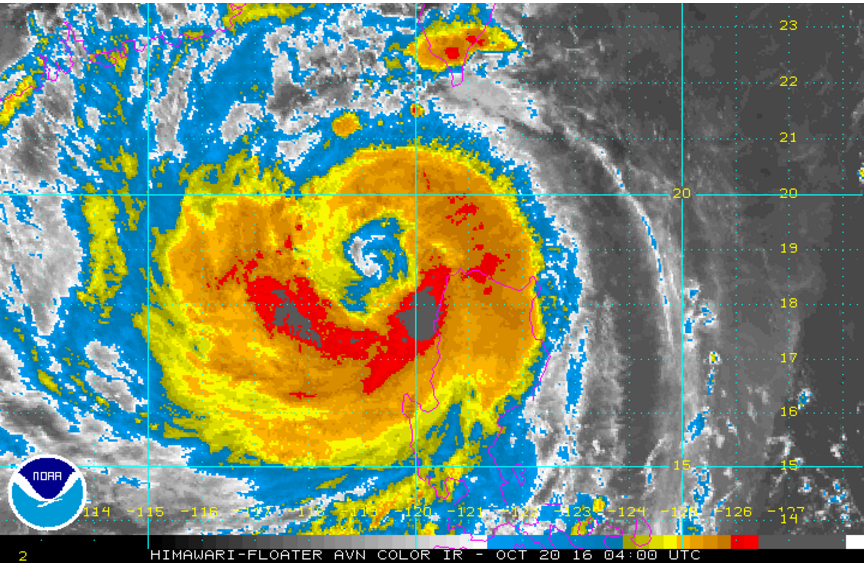Australia Weather News

Radar imagery of Super Typhoon Haima, that has caused widespread destruction in the Philippines
Victoria and South Australia are preparing for more wild weather to end the week, with the Bureau of Meteorology issuing warnings for wind gusts of up to 110km/h.
The news comes as both states are continuing the clean up from severe storms that have torn through the region.
The northerly winds are expected to reach Adelaide around 9pm on Thursday evening, before travelling further east and striking Melbourne on Friday morning.
The gusts will be of a similar magnitude to the gale-force winds that struck Melbourne on October 9 and last weekend. Both weather events caused severe damage, bringing down trees and power lines, leaving thousands without power.
The timing of Friday’s extreme winds is likely to line up with peak hour in Melbourne, with fears that the conditions could wreak havoc with Melbourne’s traffic on Friday morning.
The warnings come just days after the Bureau released a report stating that "the May to September period was Australia's wettest on record, with each of the five individual months ranking in the 10 wettest in the last 117 years."
The report added that September was the wettest September on record for the Murray Darling Basin. The town of Forbes is still recovering from the flooding of the Lachlan River which occurred as a result of the record September rains.
Australia has not been the only country to experience extreme weather conditions in recent months. The National Oceanographic and Atmospheric Administration recently revealed that worldwide, the period from January to September of this year was the hottest on record, 0.89 degrees warmer than the 20th-century average.
Additionally, in a possible foreshadowing of Australia’s upcoming tropical cyclone season, hurricanes and typhoon have caused widespread destruction in North & Central America and Eastern Asia.
Typhoon Sarika, which resulted in 25 deaths in the Philippines is expected to cause widespread flooding in south-east China in the coming days.
Additionally, a second, larger storm, super typhoon Haima, has reached landfall in the northern Philippines, destroying rice fields and flattening houses. There are fears that this could be the most the most powerful typhoon to ever strike the Philippines. After moving through the island of Luzon, the Philippines’ main island, Haima will head towards south China.
WillyWeather